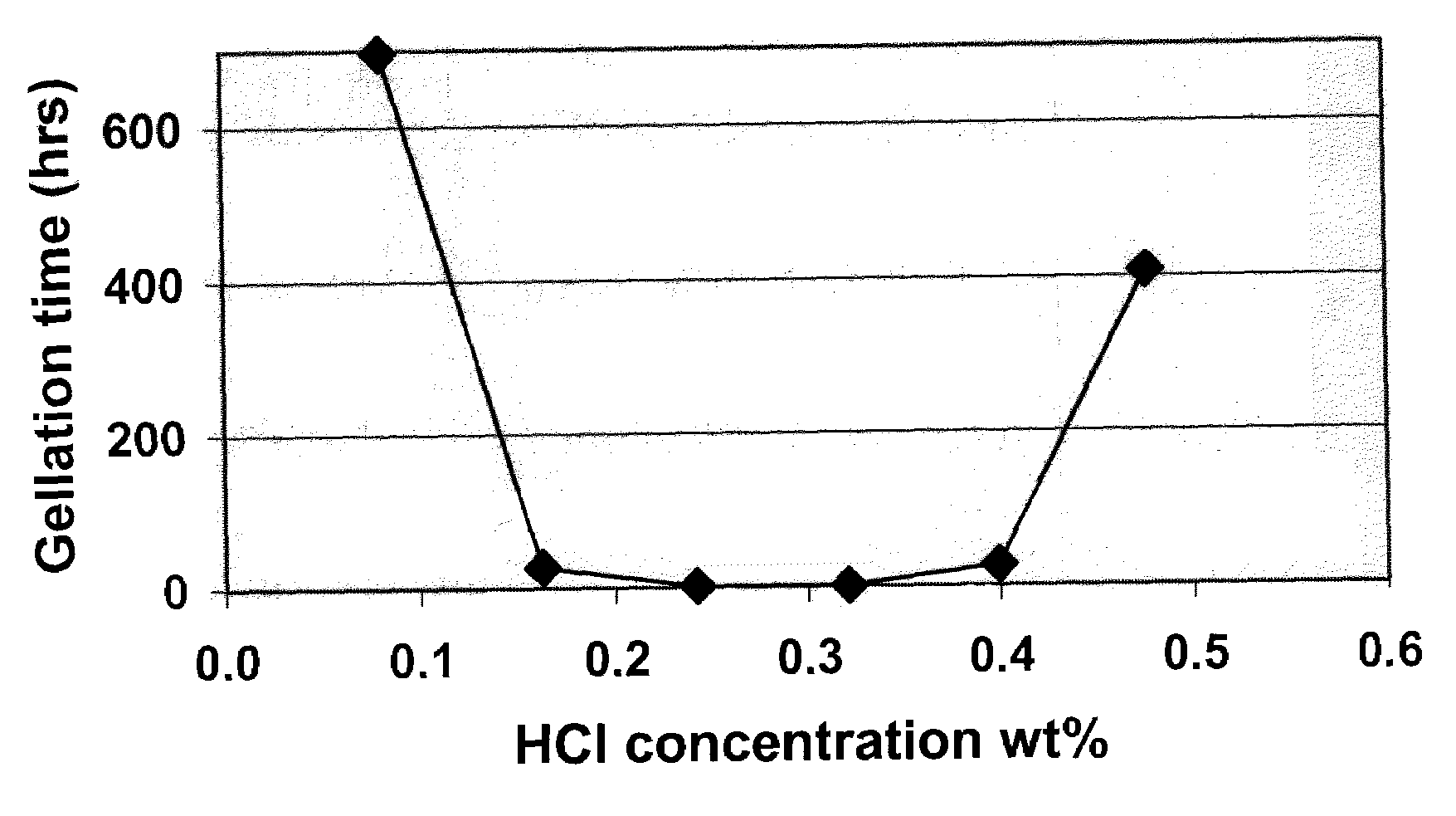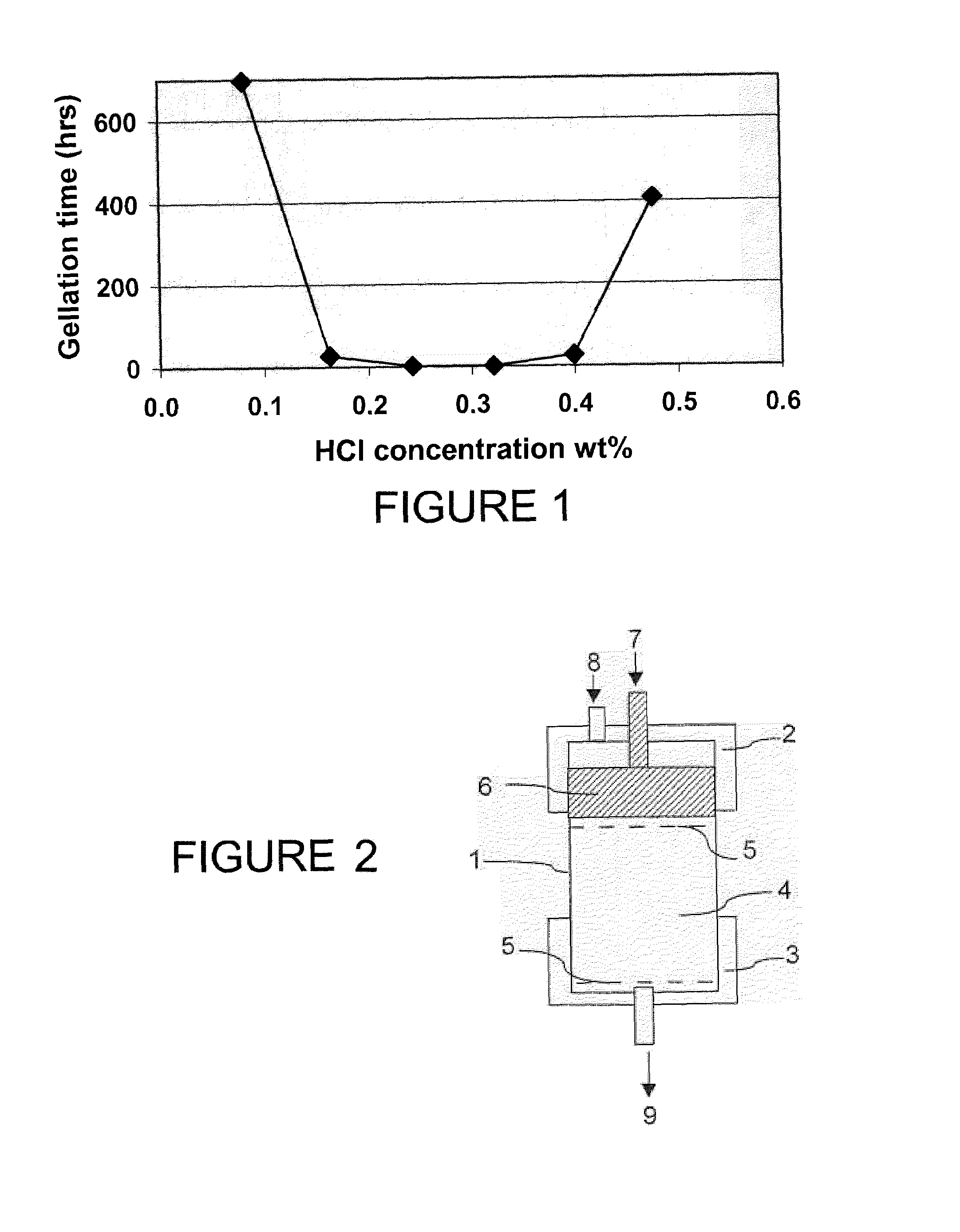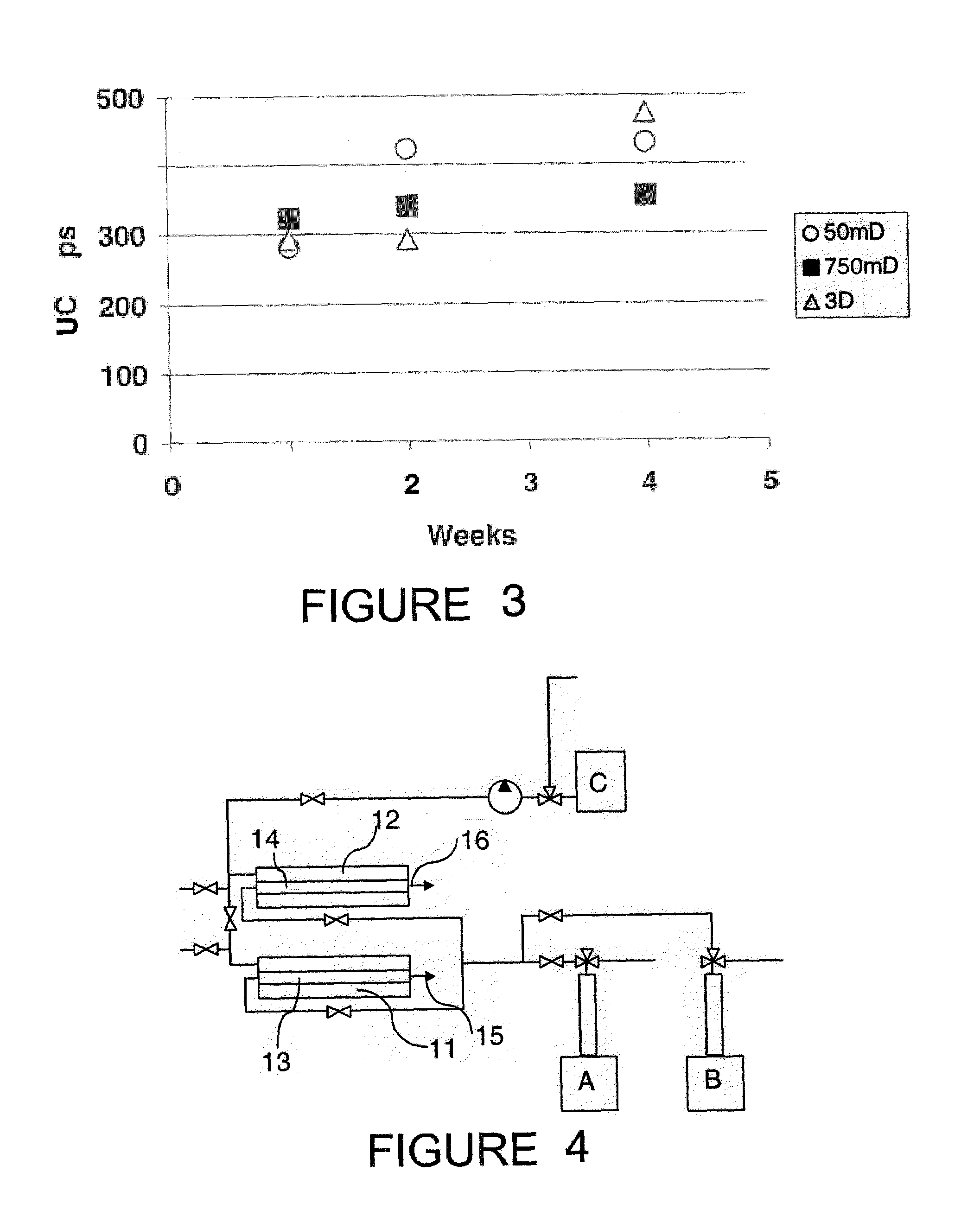Method of completing poorly consolidated formations
a technology of poorly consolidated formations and wells, applied in the direction of fluid removal, borehole/well accessories, chemistry apparatus and processes, etc., can solve the problems of poor results, gravel and screen may be plugged by scale or eroded, and high undesirable sand production
- Summary
- Abstract
- Description
- Claims
- Application Information
AI Technical Summary
Benefits of technology
Problems solved by technology
Method used
Image
Examples
example 1
Selection of Suspension
[0037]Ten commercial suspensions of aqueous colloidal silica were tested. Some characteristics of the suspensions are reported in Table 1 below, including the charge (N: negative, P: positive), the average particles size, the silica content, the specific surface and the pH. The suspensions were gelled either by addition of salt (2 ml of NaCI 4M added to 14 ml of colloidal suspension); see results in Table 2, or by addition of hydrochloric acid (aqueous solution at 15 wt %) to 15 ml of colloidal suspension; see results in Table 3. After 2 days at 66° C., the gel resistance was estimated with a spatula, by exerting a low stress (gel resistance 1) or a high stress (gel resistance 5). A value ranging between 1 and 5 was attributed depending on the gel distance (1 for very low gel strength, 5 for high gel strength).
[0038]
TABLE 1Av. Part.#ChargeSize (nm)Silica (wt %)Ssp (m2 / g)pH 1N73034510 2N12302208.9 3N12402209.7 4N22501409 5N415Unknown11 6N10050Unknown9 7N4050 80...
example 2
Optimum pH
[0042]The suspension #3 of Example 1 was selected. To 15ml of suspension, various amounts of hydrochloric acid were added. The relation between the total HCl concentration in the suspension and the gelling time (in hours) at room temperature is depicted FIG. 1. The shortest gelling time was obtained with an acid concentration of 0.32 wt %, corresponding to a pH between about 6 and about 7.
[0043]When the same test was repeated with the suspension #1 of Example 1, it was found that the shortest gelling time was obtained with a pH between about 5 and about 6. This shows that when acid is used to cause gelation, the concentration should preferably be adjusted for the pH of the suspension to be just slightly acidic (pH between about 5 and about 7) to obtain the shortest gelation time.
example 3
Injection Tests
[0044]FIG. 2 is a schematic diagram of the device used to evaluate the injectivity of colloidal silica into sand packs of various permeabilities. This device includes a tubular cell 1, closed at one extremity with a top cap 2 and with a lower cap 3 at the other extremity. A sand pack 4 is placed into the cell 1, between two mesh screens 5. A piston 6 includes a fluid inlet 7 for the injection of the treatment and pretreatment fluids. The cell is further linked to a gas source 8 such as nitrogen that allows to pack the sand by pushing on the piston. The lower cap comprises a fluid outlet 9 to collect the fluids that have traveled through the sand pack 4.
[0045]A 750 mD sand pack was preflushed with a 2 wt % KCI brine before the injection of the colloidal silica suspension #1 of Example 1, and a concentration of hydrochloric acid of about 0.45 wt % (pH between 6 and 7). The injection pressure was only 6 psi at ambient temperature. The cell was left in oven for a night at...
PUM
| Property | Measurement | Unit |
|---|---|---|
| diameter | aaaaa | aaaaa |
| diameter | aaaaa | aaaaa |
| diameter | aaaaa | aaaaa |
Abstract
Description
Claims
Application Information
 Login to View More
Login to View More - R&D
- Intellectual Property
- Life Sciences
- Materials
- Tech Scout
- Unparalleled Data Quality
- Higher Quality Content
- 60% Fewer Hallucinations
Browse by: Latest US Patents, China's latest patents, Technical Efficacy Thesaurus, Application Domain, Technology Topic, Popular Technical Reports.
© 2025 PatSnap. All rights reserved.Legal|Privacy policy|Modern Slavery Act Transparency Statement|Sitemap|About US| Contact US: help@patsnap.com



